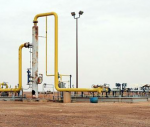You are here
Jordan completes 310 economic reforms since 2018
By JT - Apr 21,2025 - Last updated at Apr 21,2025

Jordan completes 310 of the 403 reforms it pledged in 2018 at the London Initiative conference, with a completion rate of 77 per cent, according to the Ministry of Planning and International Cooperation (JT file)
AMMAN — Jordan completed 310 of the 403 reforms it pledged in 2018 at the London Initiative conference, with a completion rate of 77 per cent, according to the Ministry of Planning and International Cooperation.
The data of the ministry's Economic Reforms Implementation Support Unit, cited by Al Mamlaka TV on Monday, showed that the government continues to implement these reform measures, although they were scheduled to be completed by the end of 2024 and extended from 2022.
This matrix constitutes a comprehensive national framework for structural and legislative economic reforms, aimed at maintaining macroeconomic stability, improving the business environment and increasing investments and exports.
The matrix was officially launched during the London Initiative Conference "Jordan: Growth and Opportunity" in February 2019, with the support of the World Bank and development partners.
The Economic Reform Matrix is a “key” guidance document for government plans and programmes, wholly owned by the government, and is subject to annual review and update under the supervision of the Economic Reform Implementation Support Unit, to ensure alignment with growth and reform priorities.
The updated version of the matrix consists of 12 axes instead of nine in its first version, covers 44 areas of reform compared with 37 in the first version, and includes 403 reform measures from only 254.
The Cabinet approved the updated matrix for the period 2018-2024 in October 2022 as a reference document to measure progress in reforms, with its extension until 2024 instead of completion in 2022.
In terms of the distribution of reforms by sector, the data showed "uneven" levels of progress and achievement, with the sectors of public finance, water and agriculture achieving the highest completion rates of 90 per cent, 91 per cent and 91 per cent, respectively.
The fiscal pillar covered three reform areas with 21 measures, while the water pillar covered two reform areas with 23 measures, and agriculture five areas with the same number of measures.
The public sector efficiency pillar, which was added as part of the recent expansion, included six areas of reform, including 46 procedures, with a completion rate of 87 per cent, which is among the highest completion rates in the new pillars.
The achievement rate in the business environment improvement pillar reached 86 per cent, distributed over three areas and 29 procedures, while the labour market and skills development pillar, consisting of four areas and 44 procedures, achieved the same percentage.
The investment and export promotion sector, which is central to its growth goals, included 65 actions distributed among six areas, and recorded a completion rate of 75 per cent.
As for the pillars of enhancing social protection, it included one area with 28 measures, and the completion rate reached 79 per cent.
The transport hub, which consists of four areas consisting of 28 actions, recorded a completion rate of 68, equal to the newly introduced tourism sector and included three areas and 22 actions.
The energy sector had a completion rate of 58 per cent out of 36 measures distributed among four reform areas, while the access to finance and capital market sector had the lowest completion rate of 53 per cent, including three areas and 28 measures.
At the end of 2022, amid the COVID-19 pandemic, the government decided to update its economic reform matrix to 12 optional pillars from nine, and to extend the credit rating process through 2023.
The update included the addition of three new pillars: the public and private sectors, the tourism sector, and the separation of the water and agriculture pillars into two pillars.
The implementation of this matrix is financed through the Multi-Donor Trust Fund for Inclusive Growth and Economic Opportunities, launched in Jordan in 2019.
Donor commitments to the fund in Jordan amounted to more than $70 million, of which $45 million was allocated to the core programme and $25.5 million to emergency cash transfers to support Jordan's response to the COVID-19 pandemic for the most vulnerable groups.
By the end of 2022, the Economic Reform Implementation Support Unit identified six priority reform areas to focus support from the Trust Fund: government procurement, investment, improving the business environment, trade facilitation, good legislative practices and the tourism sector.















